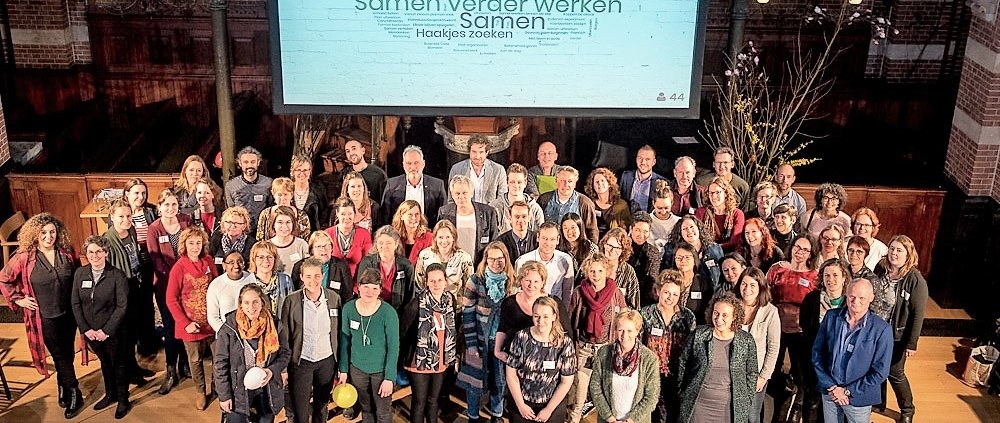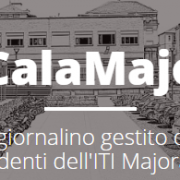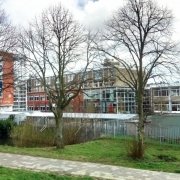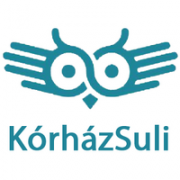WERKplaats Inclusieve Pedagogiek en Didactiek (“WORKplace Inclusive Pedagogy and Didactics”)
Excerpt
The “WORKplace Inclusive Pedagogy and Didactics” is one of eight internal “overall” workplaces (or ‘labs’) that started in the academic year 2016-2017, to help operationalize (put into practice) the new (August 2016) Strategic Plan and Vision on Education of Rotterdam University of Applied Sciences (RUAS). This ‘WERKplaats’ wants to inspire, seduce and stimulate teachers, coordinators and (program) managers from all over RUAS to come up with, discuss and share ‘bottom-up’ ideas and initiatives to improve their education in terms of making it more inclusive (e.g. teachers becoming more sensitive to the needs of their students; more students have a sense of belonging and experiences that are offered to reach their own potential).
The core idea behind this approach and initiative is: improving study success is a very complicated matter; success factors cannot be isolated from their context. There is no “secret formula” to accomplish it. But still: the initiators of this initiative believe that the key to equal chances of study success must be in inclusive pedagogy and didactics, something every teacher, program team and school has to internalize in his/her own way.
Initiators of plans within this project ensure that they are backed by their managers and (part of) their teams; they come up with detailed, realistic plans. A panel gives feedback and, if the plan is considered promising and feasible, it is funded by the ‘WERKplaats’.
Narrative, origins and objectives of the initiative
What kind of project is this? Please give a short description (summary) of it.
The WORKplace Inclusive Pedagogy and Didactics (WIPD) is one of eight internal workplaces[1], funded in the academic year 2016-2017, to help translate (put into practice) the new (August 2016) Strategic Plan and Vision on Education of Rotterdam University of Applied Sciences (RUAS). This ‘WERKplaats’ aims to inspire, seduce and stimulate teachers, coordinators and (program) managers from all over RUAS to come up with ‘bottom-up’ ideas and initiatives to improve their education in terms of making it more inclusive in the way they think is favorable and realistic (inclusive education: teachers becoming more sensitive to the needs of all their students; more students have a sense of belonging and experiences that are offered to reach their own potential).
Work definition of inclusivity (‘Programma Binding’): “Inclusivity is based on differences between students. Our expectations of all students are high; our pursuit is to create a learning environment in which every student feels at home, is part of the community and is facilitated to develop his or her own identity in relation to the professional practice he or she is prepared for.” (Plan of Action, 2019)
Everybody with a plan to make education more inclusive is warmly invited to share it. Initiators of plans ensure that they are backed by their program managers and (at least) three other members of their teams; they come up with detailed, realistic plans. A central WIPD-panel gives feedback and, if the plan is considered promising and feasible, it is funded by WORKplace to be carried out. From then, it is called an experiment. Each experiment has a “crew” of 2-4 teachers. During implementation of these experiments, monitoring takes place and Action Research is done (see below for details). The first 11 experiments just took off (academic year 2018-2019).
[1] The eight WORKplaces are: University (1), Master programs (2), Technical programs (3), Economic programs (4), Inclusive Pedagogy and Didactics (5), Educational Technology (6), Internationalization (7) and New Business (8).
Please tell us why, in general, this project is considered a successful one?
The project started very promising: 100+ (mainly) teachers and other employees attended the monumental kick-off meeting on 29 March 2018 (photo). One of the most noteworthy things in this meeting was a session during which famous Dutch people spoke about “the teacher who made a difference in my life”.
In the same academic year, the first plans were submitted and discussed with all the initiators (this is a kind of learning community). In short: bottom-up plans are stimulated and coordinated by the WERKplaats. The systematic approach and similar design of the plan descriptions enable us to compare and research the experiments, as well as evaluate the success of the project.
And why would you consider it a grass-roots initiative?
This project is not a grass-roots initiative as such, but it detects, stimulates, facilitates and coordinates (potential) grass-roots initiatives. There are currently 11 experiments running throughout RUAS, all stemming from (systemized) bottom-up ideas and initiatives. As expected in ‘grass-roots’, the eleven experiments are very different.
To illustrate all this, two short descriptions of experiments are given below (translated from Dutch):
- Flexibility and (more) freedom of choice in assessment:
The RUAS-program Industrial Design wants to clear the way towards ownership (by their students) and flexibility in its curriculum: students are facilitated to demonstrate improvements in their knowledge and ability through provided cases, but also through self-initiated activities. Apart from that, they should also be enabled to perform their cases in a different order or at a different pace (in case he or she is not able to keep up with the ‘nominal’ pace, or is faster than average). An important by-product of this approach is that teachers of different expertise will cooperate more in (integral) cases, which provides them with a clearer, interpersonal picture of every student’s overall progress.
- Resilience & Balance:
As we know, recently, the Dutch media have reported a lot about the performance-related pressure experienced by many students. They increasingly struggle with mental health issues like stress, anxiety, burnout and depression. This experiment is initiated by the student counselors, in co-creation with the Social Work department of RUAS. It consists of a program in Study Career Coaching classes with interventions inspired by Positive Psychology. Students develop skills that expand their mental resilience and flexibility. The intention is to decrease issues like stress, anxiety, mood swings and motivation in order to lower dropout and enlarge the ability to connect with others (peers, program staff, coaches and teachers). The project program is made in cooperation with RUAS-teachers, study career coaches and students.
What challenges needed to be solved in this project?
Being part of the highly diverse population of Rotterdam (and in general, of the four main cities of the western part of the country), Rotterdam University of Applied Sciences (RUAS) has a highly diverse (and rapidly changing) student population. Teaching staff does not mirror this diversity and doesn’t keep up with these changes. Study programs, therefore, traditionally seem to favor mainly white middle-class, former high school, white (female) students. Students of migrant backgrounds, of lower socio-economic or income groups, international students, those who have secondary vocational educational backgrounds, males, disabled students, LGTB+ students and probably many other students tend to study longer and/or show significantly higher drop-out rates for reasons that have nothing to do with their talents and abilities; this is the so-called performance gap.
This project addresses the performance gap by focusing on the heart of education and trying to stimulate improvements from within: the teachers in their classes. Creating a sense of belonging in a truly safe learning environment by an intercultural sensitive teacher is a fundamental first step to tighten the gap.
Is this initiative based on any particular theoretical framework? Which one?
Yes, Inclusive Excellence by Dr. Frank Tuitt cs, but also the work of, for example, Vincent Tinto (Summary: https://prezi.com/_ztv21flowhk/dr-tintos-student-development-theory/) and John Hattie about “the power of feedback” and how teachers can make a difference (Hattie / Timperley, 2007. Abstract: https://journals.sagepub.com/doi/abs/10.3102/003465430298487). Action Research is a good way to systemize interventions because it is practical and solution-based.
(Appendix) Is your intervention standing on its own or is it a part of a bigger and more holistic approach?
WIPD is part of a more holistic approach. Firstly, the project is part of a total of eight WORKplaces, and secondly: this WORKplace originates from an overall RUAS program (expertise group) on integration of students (“Programma Binding”; literally: attachment program) that already existed for years and collected a lot of information, research papers and good practices as well as support program teams by sharing information and giving advice and help, all to help reinforce the attachment between the students and their university / programs. WIPD and Programma Binding stand side by side, make use of each other’s expertise, energy and overlap in staff. More details can be found in the Plan of Action 2019.
Please describe the group(s) intended as beneficiaries of this initiative
Why has this group (have these groups) been chosen?
The target group is (mainly) UAS-teachers. The reason for this is that teachers can really make a difference in tightening the performance gap. According to Hattie cs, the most important factors in obtaining study success, apart from student-related ones, are the teacher (feedback) related ones. According to the ‘growth mindset’ thesis (Carol Dweck), the assumption that the intellect is more or less ‘fixed’ when students enter university, is one of the reasons why students from underprivileged groups are mistakenly viewed as less intelligent and talented.
Could you please tell us something about the relative size of the (of each) target group, within the school/university population, region and/or country?
The majority of RUAS teachers have no migration background, are mostly white, middle-class men and women of 30-60 years old. More awareness about intercultural differences among the teachers is needed.
In terms of student population: every student of underprivileged and (in HE) underrepresented group(s) is a (potential) target of this project.
Which social characteristics are taken into account and what is the geographical area covered?
The first part of this question has already been answered (addressing all students of underrepresented / underprivileged backgrounds). Geographical area is Rotterdam Area, The Netherlands.
On which level is the project implemented?
The level of the university as a whole.
Please describe the political and socio-economic factors that you believe have been important enablers for your initiative
Did the initiative have political support?
Yes, it did. The WORKplaces were partly funded by the university board, especially to translate the new strategy and vision on education within the organization and help put it into practice. At the start of WIPD (2017-2018), the initiators made a plan for the project, involving stakeholders (board, policy makers, managers, deans, teachers and students). The full team backed the plan.
How did it fit with local, regional or national policies?
The Dutch government (Ministry of Education, Culture and Science) encourages more diversity in HE and stimulates the universities (especially in the big cities, the so-called Big Four: Amsterdam, Rotterdam, The Hague and Utrecht) to address the aforementioned performance gap.
Who are the stakeholders supporting the initiative?
Board, deans, policy advisors, researchers, participating teachers, students.
Are there particular demographic changes present that are influencing the project?
No.
What is the institutional strategy and culture of the (educational) organization?
To maintain the economic position of the region, make use of all talents available in society and offer a safe, inclusive learning environment to all its students; if necessary, help underprivileged students emancipate.
https://rotterdamuas.com/globalassets/documenten/hogeschool/over-ons/our-agenda.pdf
https://rotterdamuas.com/globalassets/documenten/hogeschool/over-ons/vision-on-education.pdf
To what extent does the initiative have an influence on institutional policy (or potential influence) of the (educational) organization?
As the board is involved in the WORKplaces, it will interact with the stakeholders, keep a close eye on their findings and, if necessary, take “lessons learned” into account in preparing the next policy period. The same goes for a number of deans.
Explicit goals of the WORKplace (PoA 2019):
- One of the he results of the experiments should be that RUAS-students will actually work and think more inclusively. As a result of that, they will be able to effectively participate in and work for the (Rotterdam) society of the near future;
- Experiments stimulate ‘inclusivity’ in the pedagogical-didactical repertoire of the participating teachers;
- During the experiments, teachers practice new behavior in order to become more effective and develop a wide pedagogical-didactical repertoire;
- In the experiments, curricula and learning environments are developed that are based on the principles of inclusive education.
(Appendix) Is there public support for your initiative and the issue it addresses?
Yes, there is. Many people in the Dutch society as well as a number of schools and some political parties are worried about increasing dualism in Dutch society; they want to do something about it.
(Appendix) What other factors do you think have been important for the success of this initiative?
It is too early to tell.
Please describe the overall initiative design and the methods and tools used to reach the goals
Please describe the specific activities carried out.
Schedule (to be updated annually):
2016-2017: new RUAS strategy and vision on education. The Board commissioned the funding of a number of WORKplaces on the operationalization of the new strategic plans and vision.
September / October 2017: Preliminary discussions about the WORKplace Inclusive Pedagogy and Didactics (WIPD) took place, with (a delegation of) teachers, program managers, deans and policy makers. Based on the assignment from the board, a Plan of Action (PoA) 2018-2019 has been formulated.
November 2017: the aforementioned PoA has been discussed with the board. Targets for the WIPD were established. In the first place: WIPD is intended for experiments and research in programs; increases present energy in the team (or collective; part of a team). It involves students and the outside world and researches the funded experiments (assignments for knowledge centers, graduate students and PHD students. Finally, the WIPD shares its results and builds on preliminary achievements.
The plan for this first year was to start with a limited number of experiments and conclude these successfully. One of the indicators to measure success here is the notion that inclusivity, pedagogy, didactics and curriculum development can reinforce one another (and thus all are ingredients of an experiment). Another one is that each experiment should not depend solely on individuals (it is more like a collaborative process).
2017: Approval of the PoA by Control Group “Binding” and Board respectively.
2017-2018: Organize kick-off (on 29 March 2018) and recruit teachers / collectives to write, submit and share their (sometimes rough) plans, help them structure, systematize and budget their plans, as well as create support for it in their teams.
2017-2018: Evaluate plans, give feedback and help to finalize them.
September 2018: First round of experiments takes off. Apart from that: plenary meetings still take place for monitoring, sharing of knowledge and experience (to avoid ‘drifting away’ now that individual experiments are running). A researcher makes an inventory, monitors and evaluates the project as a whole.
Autumn 2018: Evaluate PoA 2018; write new PoA (2019)
2018-2019: Monitor and finalize the first round of experiments; evaluate.
Communication: Each month one experiment is put on display via Intranet.
Look forward to 2019-2020: Where are the (new) energy and ideas? And which of the current experiments are suitable for further expansion next year?
2019-2020: Second round and, if applicable, expansion of some existing experiments. Detailed planning under construction.
What were the key roles (teacher, student, management team etc.) within the project?
Project coordinator(s), participating teachers, researchers, policy makers, students (volunteers)
What ideas, tools, theories, models, methodology (etc.) have been used to reach the goals?
The same models and theories as described before: Tuitt, Tinto, Hattie and others as far as Inclusive Education is concerned. Apart from that, the coordinators considered it very valuable to choose Appreciative Inquiry (https://en.wikipedia.org/wiki/Appreciative_inquiry) as a method to communicate with the initiators of the plans, to get the most out of it (as opposite to a more normative approach). To conclude: the idea of the coordinators is to generate and multiply energy where it already exists; the more difficult (complicated) teams that didn’t come up with plans by themselves were not addressed (yet).
What are the final revenues of the project?
It is too early to tell.
Please describe if your project ensured its sustainability
If so, how did you ensure the short-term impact of the project?
As described before: initiators submit well-described and feasible plans and ensure that there is back-up from their colleagues. Creating an expanding learning community of ‘ambassadors’ and aligning them guarantees that the project stays “warm”.
And how did you ensure the long-term impact of the project?
The project is still in its exploring phase; its stakeholders try to live up to the complexity of the problems. This is why bottom-up storytelling and -sharing is seen as the best way to go. Where the pathway is leading to, exactly, is not known yet, but creating an extensive learning community of (early) adapters, share knowledge and systemize and align plans will help change the culture within RUAS and bring an inclusive learning environment closer.
Has your project been replicated elsewhere?
At RUAS, similar initiatives have been taken place in recent years, like the Practical Learning Community (PLC) project as described elsewhere in the #Multinclude database. The PLC-project started in 2015 and shows some important similarities with the WIPD-project. It is a good thing that elements and ideas of the PLC-project are used and tried in a different context. For example: the forming of learning communities of practitioners that exchange, discuss and share knowledge, stories and possible solutions; teachers formulating their own learning goals, transforming them into interventions; the use of Action Research to evaluate the experiments as well as the project as a whole (the “two layer approach” that makes it possible to help practitioners to systemize, analyze, evaluate and improve their approach). The main differences are that the WIPD-project addresses RUAS as a whole (where the PLC project addressed only the RBS department) and that, by addressing the initiators as a ‘linking pin’, intercultural awareness may multiply faster and better spread throughout the organization. The PLC-project was initiated ‘from within’ RBS and its setup has been truly democratic (no supervision, only inter-vision), where WIPD is initiated by members of the central staff: each plan has been criticized by a central panel end each experiment is monitored and researched by the WIPD ‘staff’ as well as supported and monitored by an adviser (member of the Expertise group). These are very interesting differences to compare during evaluation; each approach may have its virtues and risks.
The good thing is that, to answer the question, at RUAS, a network of inclusive ambassadors arose in recent years, sharing knowledge and making use of ‘lessons learned elsewhere’ when setting up a project. In that respect, it is to be expected that (elements of) WIPD will also be replicated elsewhere in the years to come.
Please tell us about the resources used in this initiative
What was the budget for the initiative?
For each academic year (2018-2019 and 2019-2020), a budget of grossly 200.000 Euro’s is allocated for project administration / overhead / research / plenary program, and mainly: to fund the experiments.
How much did the initiative depend on volunteers?
A little; a few students cooperated voluntarily by giving their opinion on the submitted plans (input). Apart from that: some RUAS-employees volunteered by participating in the preliminary discussions about the setup of the WORKplace in September/October 2017.
How were the costs perceived by the public/the sector/other stakeholders?
N.a.
To what extent did the initiative achieve its objectives?
Please describe the evidence to support the success of your initiative.
Each experiment will create its own evidence and the success of the WIPD will be produced by monitoring, researching and evaluating the experiments as well as the project as a whole (see also “activities carried out”, question 5).
Did the intervention lead to any unintended (positive) outcomes?
It is too early to tell yet, but the coordinators were already surprised to see how successful (motivating) the kick-off meeting was (with so many people attending). Moreover, the Appreciative Inquiry turned out to be very fruitful. By labeling not-yet-sufficient plans as “promising”, for example, their initiators were very motivated to improve and specify these plans. As a result, almost all plans could in the end be granted and financed. These things exceeded all expectations!
What indicators (quantitative and qualitative) have you measured to demonstrate success?
This is still in progress and detailed ideas about it (especially at the overarching level of the WORKplace project) will develop along with the timeline of the project. In general, as already stated, each experiment has to meet certain criteria (see the answer to question 5: activities carried out). Moreover, each experiment monitors and measures its own progression and success.
(Appendix) How did you evaluate/monitor this intervention?
Already answered (and still under development)









